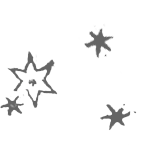Through the Eyes of the Lynx: Galileo, Natural History and the Americas
The Academy of the Lynx
The Accademia dei Lincei, or Academy of the Lynx, was founded in 1603 as a scientific society devoted to the investigation of the natural world. It was so-named on account of the sharp eyesight of the the lynx, a characteristic the society sought to embody in their scientific investigations of the natural world. Galileo is credited as the preeminent member.
Browse Items on Display
| 1 |
Plant Anatomy Porta, Giambattista della (1588) Della Porta’s portrayal of a lynx on the title page of this and other works inspired Cesi with the name for his own Academy. Here, della Porta announced the existence of the Accademia Secretorum Naturae, an academy he founded in Naples cx. 1580 with the aim of discovering the secrets of nature... |
|
| 2 |
Natural Magic, 1589 Porta, Giambattista della (1589) In this poster-sized work, the first publication of observations made with a microscope, Cesi and Stelluti studied the anatomy of the bee. The text includes classical references to bees as well as new knowledge, integrated in a tabular outline. |
|
| 3 |
Natural Magick, 1658 Porta, Giambattista della (1658) In Natural Magick, della Porta described an optical tube he designed to make far things appear as though they were near. The field of optics was often associated with magical tricks and illusions, and for that reason sometimes held suspect among non-mathematicians. |
 |
| 4 |
On Secret Writing Porta, Giambattista della (1563) Members of the Academy of the Lynx preferred to communicate with each other in code. Della Porta was the most accomplished cryptographer of the Renaissance. This work includes a set of movable cipher disks to code and decode messages. |
 |
| 5 |
Letters from Galileo to Prince Federigo Cesi Galileo, (1629?) In these letters, Galileo thanked Cesi for his support of the Academy. Galileo quickly became the most illustrious member of the Lynx. Until Cesi’s death in 1630, he provided Galileo and other Lynx members with intellectual, financial and moral support. |
 |
| 6 |
Human Anatomy Porta, Giambattista della (1637) Della Porta applied the “doctrine of signatures” to humans and animals, exploring how the shape of someone’s head, ears, nose or some other external feature might reveal that person’s true, inner nature by how closely it resembles a particular animal. |
|
| 7 |
Treatise on Fossil Mineral Wood Stelluti, Francesco (1637) The Academy of the Lynx emblem appears prominently on this title page. Although Stelluti once believed that fossils resembling wood originated from buried tree trunks, Cesi persuaded him otherwise. |
|
| 8 |
On the Transformations of the Atmosphere Porta, Giambattista della (1610) Della Porta dedicated several books to Cesi. Cesi underwrote publication of this book on meteorology, which includes wide-ranging discussions of water, earthquakes and meteorites. The title page displays Cesi’s coat of arms. |





